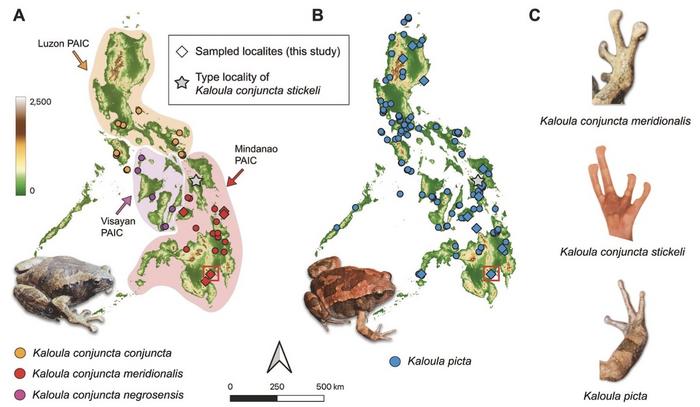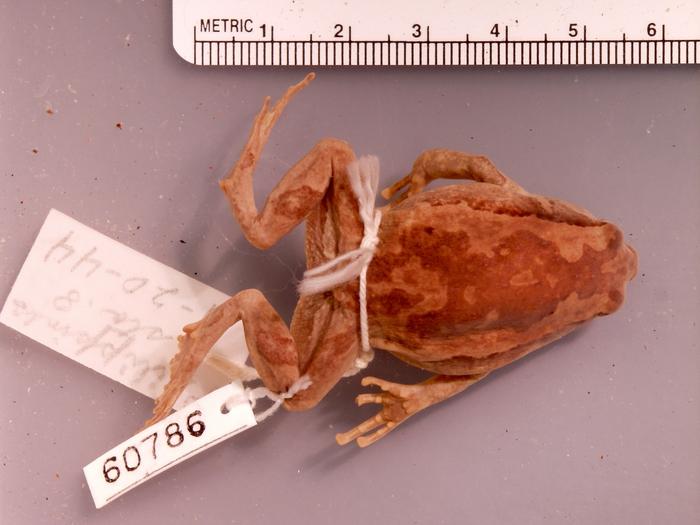The researchers say that the tree dwelling females answered the calls of the ground dwelling males, which resulted in hybridization.
Researchers with the University of Kansas KU Biodiversity Institute and Natural History Museum have determined that a frog discovered more than 80 years ago is not a new species, but rather a hybrid frog that shares equal DNA from both parents.
The frog, the Leyte Chorus Frog Kaloula conjuncta stickeli is a cross between K.c. meridionalis and K. picta. And it is also what scientists call an F1 hybrid, which means the frog is a first generation offspring of the two frog species and shares genetic material equally between both parents.
“It’s this really weird, enigmatic frog in the Philippines,” Chan Kin Onn, a postdoctoral researcher at the University of Kansas KU Biodiversity Institute and Natural History Museum said in a statement describing the frog. Kin Onn is the lead researcher on the paper describing the frog. “The reason the frog’s enigmatic is that it was collected a long time ago,” Chan said. “It looks really distinct — you can just eyeball a specimen and immediately tell it’s not this, it’s not that; it’s something else. When it was originally described, it was classified as a subspecies.”

Distribution of the frogs studied and examples of their finger disc widths. Distribution of the Kaloula conjuncta complex A and B K. picta. Diamond = location of samples sequenced for this study; star = type locality of K. c. stickeli; red box = location of the putative hybrid zone where K. c. meridionalis, K. c. stickeli, and K. picta co-occur. C Differences in widths of the finger discs in the focal taxa.
The two species would not normally meet as one is arboreal and the other is a ground dweller. They also breed in totally different places. Deforestation, on Leyte island and much of the other islands in the Philippine Archipelago, however, has created open spaces where the habitats overlapped. The researchers say that the tree dwelling females answered the calls of the ground dwelling males, which resulted in hybridization. This interaction was suspected years ago as scientists witnessed it, but the tools were not available to prove out their theory, until now. The physical differences between the two species are striking. One has big, expanded toe pads for climbing while the other does not because it is a ground dwelling species. The hybridized frog has intermediate sized toe pads. The frog, however, cannot reproduce, making it an evolutionary dead end.
“When they breed, we think it likely that genetic incompatibilities form,” Chan said. “Apparently, the hybrids are incompatible with each other, and with the two species that produced them, so they cannot progress beyond that first generation F1 hybrid. At least, this is what we suspect, and it opens the door for future research to verify this.”
“The person who first discovered it collected only two specimens,” Chan said. “Over the course of several decades, despite many researchers returning to the same locations, only five more specimens have been found. The lack of material makes it really difficult to study — only seven specimens exist in collections worldwide. For the longest time, we didn’t have the tools to figure it out, so people considered it either a subspecies or questioned its validity. Some hypothesized that it might be a full species, one that might already be extinct. No one really knew for sure, so it remained in this gray area.”
An abstract of the paper describing the frog can be read on the Nature.com website.



